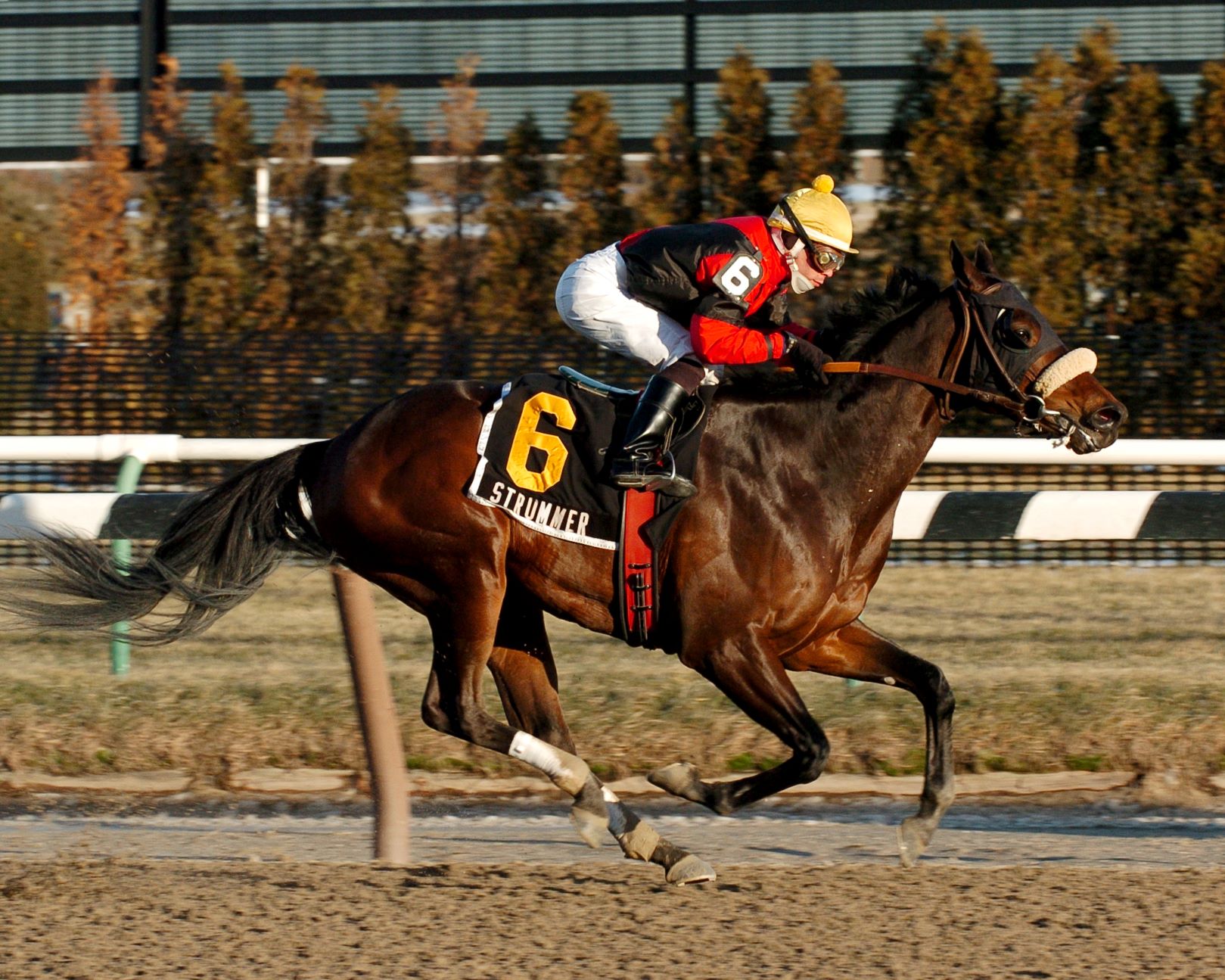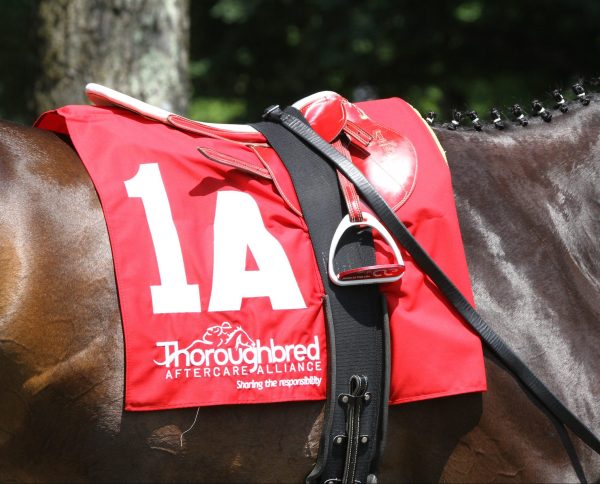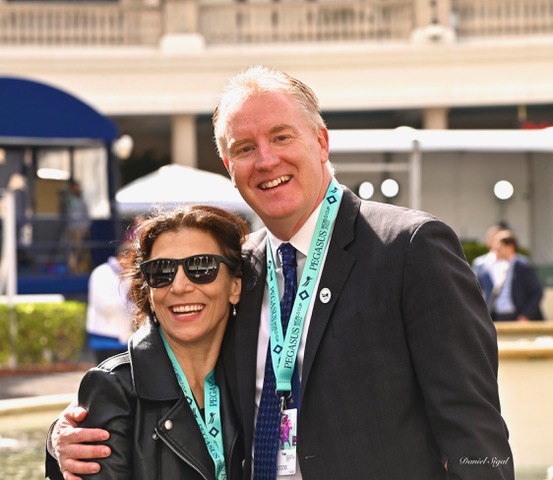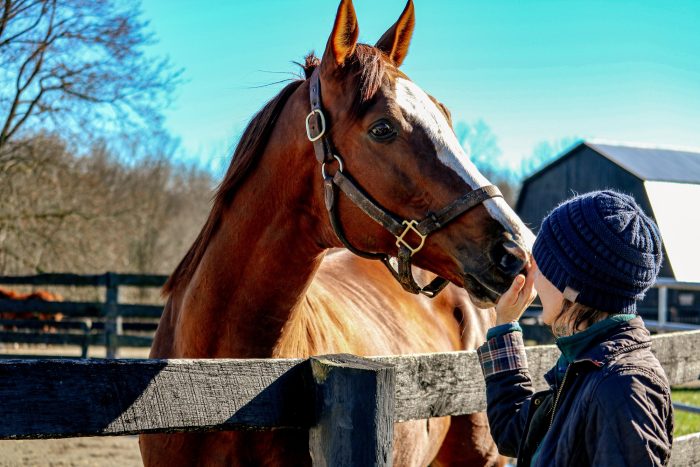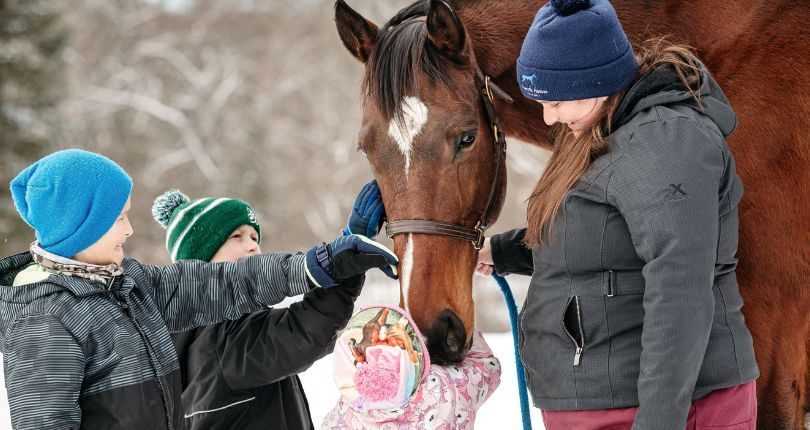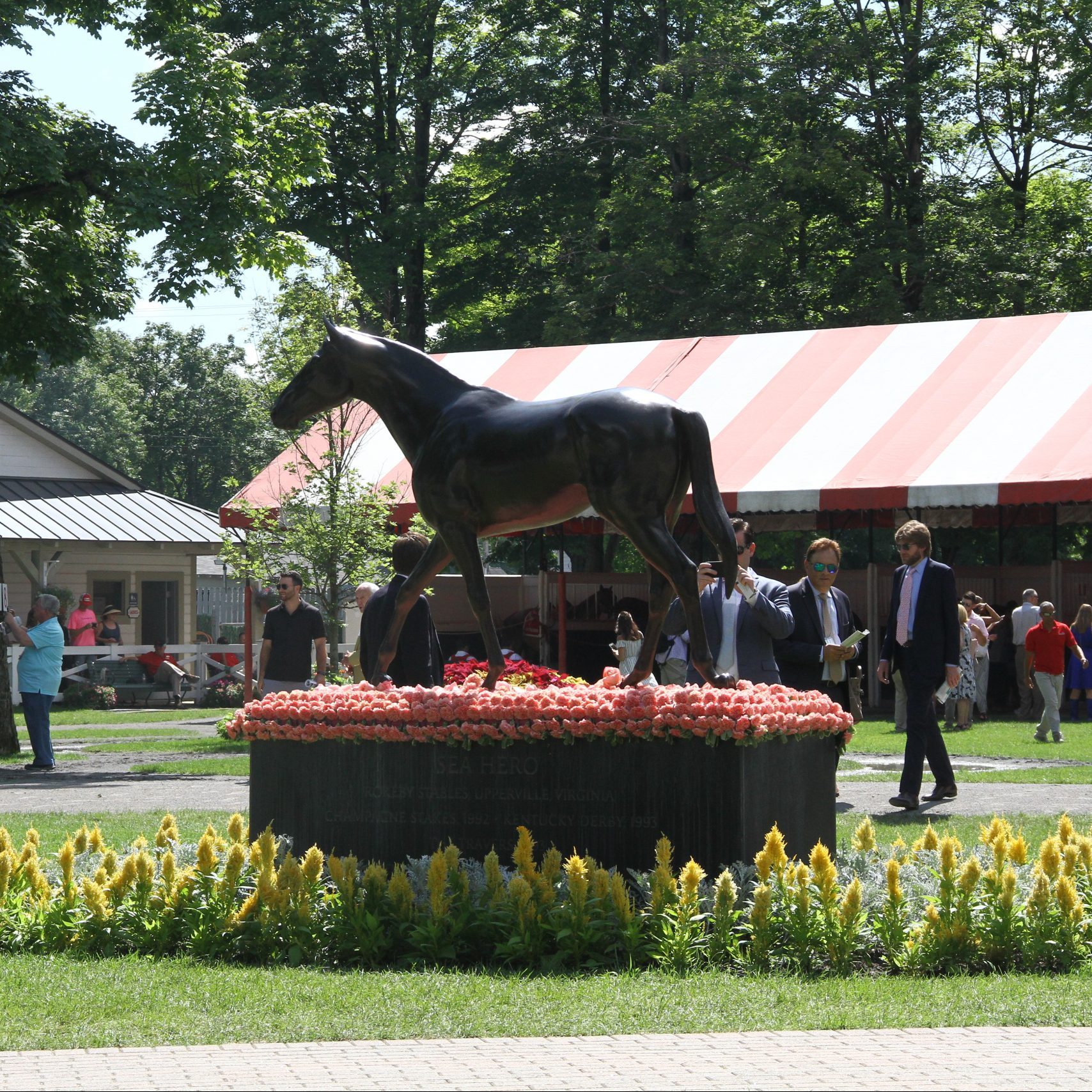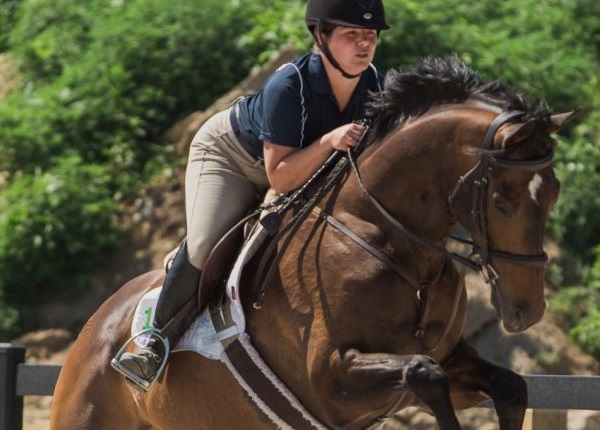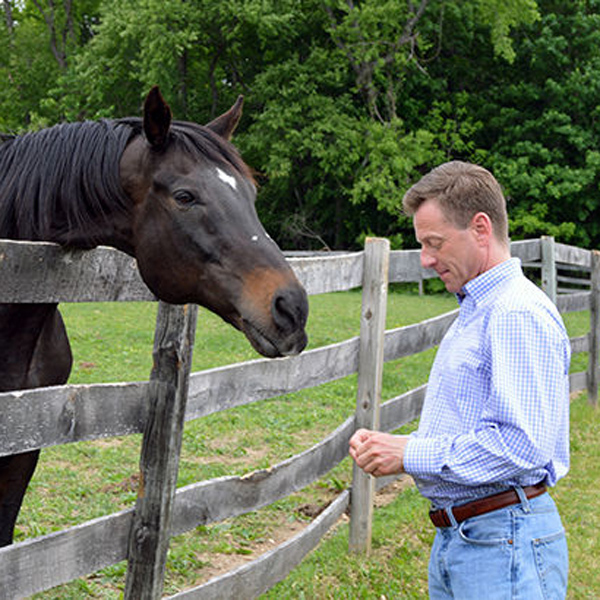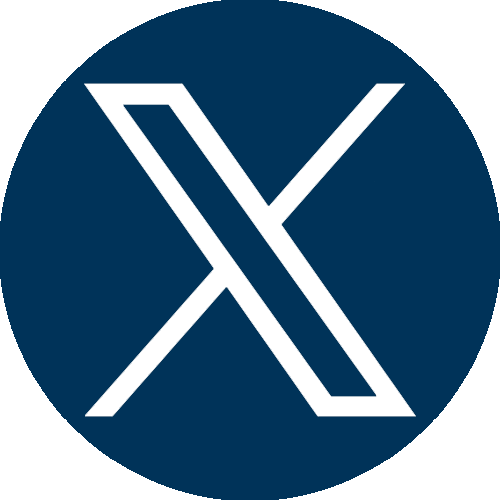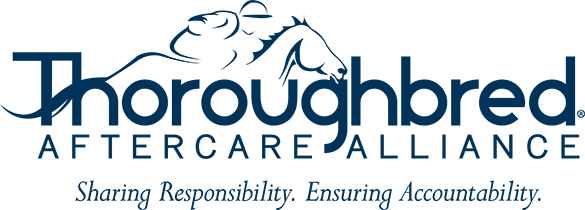NYRA
By: Mary Eddy/NYRA
In January of 2006, a plain bay named Strummer made his connections proud as he crossed the finish line first in the $65,000 Jimmy Winkfield to score his first stakes victory.
Nearly 17 years after posting his biggest accomplishment on the racetrack, Strummer is still putting smiles on the faces of those around him as one of 16 retired racehorses who have found a home at Old Friends at Cabin Creek in Greenfield Center, N.Y.
Read More >The Thoroughbred Aftercare Alliance (TAA) will host the Saratoga Community Booth for Whitney Stakes Day on Aug. 6. Patrons are encouraged to stop by the community booth to learn about the organization’s mission from Thoroughbred Aftercare Alliance representatives, and to make a donation in exchange for a variety of racing memorabilia and TAA swag. Racing fans can also show their support by opting to donate to the Thoroughbred Aftercare Alliance throughout the Saratoga meet when cashing a winning ticket on an AmTote International self-service betting terminal. All donations are tax deductible. On the Whitney undercard, horses will don NYRA-donated Thoroughbred Aftercare Alliance saddle towels for a race named in honor of the TAA. In the winner’s circle after the race, the TAA will present awards to the best turned out horse and winning groom and connections. “The Saratoga Community Booth is a great opportunity for racing fans and participants alike to learn more about the TAA,” said TAA President, Jeffrey Bloom. “We are also honored to have the TAA represented with a race on the Whitney Day card. NYRA has been an invaluable stakeholder to the TAA for many years and we’re excited to continue the tradition of celebrating accredited aftercare on Whitney Day.” The New York Thoroughbred industry is a leader in aftercare, donating more than $1.28 million toward racehorse retirement every year. In addition to the contributions made by NYRA, the New York Thoroughbred Horsemen’s Association (NYTHA), the New York Thoroughbred Breeders (NYTB), the NYRA jockey colony, and individual owners and trainers, two ground-breaking programs have been implemented at the NYRA tracks: owners contribute a per-start fee for every horse that races, and they pay a surcharge on every horse claimed out of a NYRA race. Those two programs alone raise about $500,000 every year. “The work of the Thoroughbred Aftercare Alliance is of the upmost importance to the New York Racing Association,” said NYRA Senior Vice President of Racing Operations, Frank Gabriel Jr. “We’re thrilled to highlight such a worthy organization on one of Saratoga’s biggest days of racing.” Photo: Suzie Picou-Oldham
Read More >The need to ensure responsible ownership at all stages of a racehorse’s life was a recurring theme at this week’s Thoroughbred Owner Conference, which was held July 25-26 in the 1863 Club at Saratoga Race Course. The event, which attracted more than 100 attendees, was presented by the New York Racing Association (NYRA) and hosted by The Jockey Club and Thoroughbred Owners and Breeders Association. The keynote address of the conference was delivered by Stacie Clark-Rogers, operations consultant for the Thoroughbred Aftercare Alliance (TAA). Clark-Rogers summarized the evolution of aftercare over the last 50 years and its increased prioritization among those involved in the Thoroughbred industry. She touched on the various organizations and initiatives formed by the industry to support aftercare, including the Thoroughbred Retirement Foundation, Thoroughbred Charities of America, Retired Racehorse Project, Thoroughbred Incentive Program, and TAA. She talked about the importance of the TAA and its role as racing’s accrediting and funding body for aftercare. Among the organizations accredited by the TAA are groups that offer equine-assisted therapy (EAT) by utilizing off-the-track Thoroughbreds, and Clark-Rogers advocated for EAT as an option for these horses. “These programs in my opinion are greatly undervalued, and we could be doing so much more to connect people with retired Thoroughbreds, and in return, promote the horse, the industry, and the sport of horse racing,” she said. “If we have learned anything over the last 20 years of aftercare initiatives, we all need to work together in all aspects of this industry, not just so the aftercare groups can succeed, but so the industry can be more accountable and thus succeed as a responsible, ethical sport.” Other topics of focus at the conference included buying at the sales, selecting a trainer, equine safety, partnerships, and international racing. The second day of the event featured a panel composed of a family of jockeys: Dylan Davis was joined by his sister Katie and her husband, Trevor McCarthy, with an appearance by Dylan and Katie’s father, former jockey Robbie Davis. The discussion was moderated by Eclipse Award-winning jockey Richard Migliore, who currently works as a racing analyst for NYRA. Tony Allevato, chief revenue officer for NYRA and president of NYRA Bets, opened the conference by describing efforts NYRA has made to improve the racing and ownership experience. For example, during NYRA’s racing coverage on Fox Sports, the production team makes it a priority to interview owners before and after each race. “It’s important for us as an operator to make the experience as good as possible,” he said. “If an owner thinks that there’s a chance that they can get on national TV, we think that adds to the experience.” The conference began with a reception at the National Museum of Racing and Hall of Fame, and attendees enjoyed the races at Saratoga on Wednesday. “After being postponed for two years due to COVID-19, we were delighted to finally bring the Thoroughbred Owner Conference to Saratoga for the first time,” said Gary Falter, project manager for OwnerView. “Competing at Saratoga is a dream for any Thoroughbred owner and a fitting location for this conference, where we provide existing, new, and prospective owners the opportunity to learn about all aspects of owning racehorses while facilitating networking with the industry’s most prominent names.” Tom Durkin served as the master of ceremonies. Participants on the panels included owners Tina Bond, H. James Bond Racing Stable and Song Hill Thoroughbreds; Michelle Borisenok, Old Tavern Farm; Peter Brant; Terry Finley, West Point Thoroughbreds; Tom Gallo, Dream Maker Racing; Len Green, D.J. Stable; Jack Knowlton, Sackatoga Stable; and others. A video replay of all panels at the conference will be available at ownerview.com within the next week. OwnerView is a joint effort spearheaded by The Jockey Club and the Thoroughbred Owners and Breeders Association to encourage ownership of Thoroughbreds and provide accurate information on aspects of ownership such as trainers, public racing syndicates, the process of purchasing and owning a Thoroughbred, racehorse retirement, and owner licensing. The need for a central resource to encourage Thoroughbred ownership was identified in the comprehensive economic study of the sport that was commissioned by The Jockey Club and conducted by McKinsey & Company in 2011. The OwnerView site was launched in May 2012. Additional information about OwnerView is available at ownerview.com or by contacting Gary Falter at gfalter@jockeyclub.com or 859-224-2803. Photo: Daniel Segal
Read More >Visit the TAA at Saratoga Race Course on Saturday, August 6, 2022 at the community booth. The TAA will also have a TBD race presentation on the Whitney Stakes undercard.
Read More >This year the Thoroughbred Aftercare Alliance celebrates 10 years of service since being established by the industry—an anniversary that offers racing an opportunity to make actionable goals for continued support of Thoroughbreds. Here is a look at where TAA has been in those years and where it might be going, with help from racing and aftercare industry veterans: Jeff Bloom, TAA president and managing director of Bloom Racing; Richard Schosberg, director and aftercare chair of the New York Thoroughbred Horsemen’s Association, president of TAKE THE LEAD, and TAA board member; Kristin Werner, senior counsel for The Jockey Club and administrator of the Thoroughbred Incentive Program; Jen Roytz, former executive director of the Retired Racehorse Project; Anna Ford, Thoroughbred program director for TAA-accredited New Vocations Racehorse Adoption Program; Lisa Molloy, program director of TAA-accredited ReRun; Laurie Lane, cofounder and president of TAA-accredited Second Call Thoroughbred Adoption & Placement; and Kim Smith, founder of TAA-accredited Second Stride. Q: Why is there a need for industry oversight of aftercare? Werner: The conversations about aftercare really started for me around 2009 or 2010. There was some retraining, retirement, and adoption going on and organizations like Thoroughbred Retirement Foundation, New Vocations, and Thoroughbred Charities of America were doing good work. But, the overall aftercare picture looked a bit piecemeal with gaps in services and areas of the country. And, it was not supported in any large part by the racing industry. As social media continued its rise in popularity, more and more cases of “rescue organizations” needing to be rescued began to appear. The general public became more aware of the fate of Thoroughbreds once their racing careers were complete. It was apparent that a multi-faceted solution was needed, which included accreditation of organizations providing aftercare, a funding source from industry constituents for those organizations to do their work, and incentive programs for Thoroughbreds in a second career. In the years that followed, this was accomplished through the formation of the Thoroughbred Incentive Program, Thoroughbred Aftercare Alliance, Retired Racehorse Project, and numerous other regional and track-based organizations focused on supporting organizations providing aftercare. Molloy: Prior to the formation of the Thoroughbred Aftercare Alliance, there was a time when there were so many rescues and programs operating without any guidance, provisions, or checks and balances. This created issues for those wanting to donate their horses and those wanting to donate money. Finding a way to responsibly retire a horse and ensure an empathetic and compassionate retirement with viable second career options really was a difficult path to navigate for an owner. The processes that are in place, especially using Thoroughbred Aftercare Alliance-accredited organizations working in partnership with racetrack programs like TAKE THE LEAD, provide transparency and prevent horses from falling through the cracks. Q: In the past decade what have you learned about the versatility of the Thoroughbred? Bloom: Over the last 10 years we have seen numerous examples and heartfelt stories of re-trained, re-homed, and re-purposed off-the-track racehorses. From assisting with therapeutic care for mentally and physically challenged children and adults, to full-blown sporting events such as polo, dressage, and eventing, to backyard trail riding, participating in television and movies and everything in-between, the Thoroughbred racehorse has proven to be incredibly kind, intelligent, versatile, and durable for use following their racing careers. Werner: I am fortunate to see on a daily basis how versatile the Thoroughbred is through my work with the Thoroughbred Incentive Program. We have Thoroughbreds participating in and excelling in hunter/jumpers, eventing, dressage, English and Western pleasure, barrel racing, ranch work, endurance, working equitation, therapeutic riding, equine-assisted therapy, mounted police, polo, polocrosse, competitive trail, recreational riding, and even skijoring. I am sure there are more that I am missing. Lane: It was the best kept secret. For those of us who worked with Thoroughbreds, we knew the versatility and the many incredible talents and tasks our Thoroughbreds could achieve just given the chance. Q: Do you think there has been a new interest in the Thoroughbred as a sport horse? Roytz: A thousand times yes. One of the most meaningful statistics that comes out of the data we collect from our Thoroughbred Makeover competitors each year is the ratio of first-time competitors versus repeat participants. Each year a significant portion of the competitors at the Thoroughbred Makeover are competing at the event, and often taking on the retraining of a Thoroughbred, for the first time. RRP’s mission is a bit different from most other aftercare organizations in that it focuses on expanding the market and increasing demand for Thoroughbreds in equestrian sports rather than doing hands-on re-training and re-homing. I strongly believe it takes both approaches to aftercare to be successful. The Jockey Club’s Thoroughbred Incentive Program and the TAKE2 program, both of which offer Thoroughbred-specific shows, horse show classes, and prizes throughout the country, as well as TIP’s recreational riding prizes and incentives, are other great examples of ways to incentivize equestrians to actively choose Thoroughbreds over other breeds for equestrian sports. Q: What do you think the factors in this have been that have helped a new interest in the use of the Thoroughbred? Roytz: Programs like the Retired Racehorse Project, The Jockey Club Thoroughbred Incentive Program, TAKE2 show series, and others that incentivize equestrians to compete on Thoroughbreds is a major driver in garnering new interest for Thoroughbreds in the equestrian world. I think adjusting our messaging as an industry will continue to help to appeal to equestrians. By positioning Thoroughbreds not as “retired racehorses” (which naturally insinuates a conclusion to their use/usefulness) but as “Thoroughbred sport horses” or “sport horse prospects” will make them more appealing to a non-racing equestrian audience as it focuses on these horses’ potential in new sports, the sports they are being marketed for, and that they will likely spend a more significant portion of their life doing. Q: What have been some of the most important developments of Thoroughbred Aftercare in the last 10 years? Ford: In the last 10 years
Read More >Upon retirement from racing, “Kid”, as he is affectionately known, became a track pony at NYRA, his friendly and easy-going personality making him a good candidate for assisting racehorses on the track.
Read More >The New York Racing Association, Inc. (NYRA) today announced a series of events to highlight the work of the Thoroughbred Aftercare Alliance (TAA) on Saturday, August 7 and Sunday, August 8 at Saratoga Race Course. The TAA is the nonprofit organization that accredits, inspects, and awards grants to approved aftercare organizations to retire, retrain, and rehome Thoroughbreds using industry-wide funding. Based in Lexington, KY, the TAA is supported by owners, trainers, breeders, racetracks, aftercare professionals, and other industry members. Since inception in 2012, the TAA has granted more than $20.7 million to accredited aftercare organizations, assisting 12,900 Thoroughbreds. Currently 81 aftercare organizations supporting approximately 180 facilities across North America have been granted accreditation. On Saturday, August 7, the TAA will be featured at the NYRA Community Booth, where fans will be able to learn about the organization’s mission from TAA representatives, and to make a donation in exchange for a Remi Bellocq cartoon t-shirt and a variety of racing items like saddle towels and goggles. Racing fans can also show their support by opting to make a donation to the TAA throughout the Saratoga meet when cashing a winning ticket on an AmTote International self-service betting terminal. All donations are tax deductible. On Sunday, August 8 horses will don NYRA-donated TAA saddle towels for a race named in honor of the TAA. In the winner’s circle after the race, the TAA will present awards to the best turned-out horse and to the winning groom and connections. “Many consider the Whitney Stakes as the marque race for older horses at Saratoga,” said TAA President Jimmy Bell. “What better stage for the TAA to be present and share in the excitement of the day and the commitment to Thoroughbred aftercare.” “Thoroughbred Aftercare Alliance Weekend is a golden opportunity to share the kind of productive careers that Thoroughbreds can enjoy after they leave the track,” said Stacie Clark-Rogers of the TAA. “In many cases, these are talented and highly trainable horses who demonstrate an ability to flourish in new careers like show jumping and dressage. Training and owning these horses can be also an important and rewarding experience.” The New York Thoroughbred industry is a leader in aftercare, donating more than $1.28 million toward racehorse retirement every year. In addition to the contributions made by NYRA, the New York Thoroughbred Horsemen’s Association (NYTHA), the New York Thoroughbred Breeders (NYTB), the NYRA jockey colony, and individual owners and trainers, there have been two ground-breaking programs implemented at the NYRA tracks. Owners pay a per-start fee for every horse that races, and they pay a surcharge on every horse claimed out of a NYRA race. Those two programs alone raise about $500,000 every year. Photo: Suzie Picou-Oldham
Read More >With no spectators on track at Saratoga Race Course, NYRA has moved its Saratoga Community Booth online. Follow along with the TAA and NYRA on social media.
Read More >Bubba Sparks had a nose for the wire on the racetrack, and at the age of 19 he’s still finding ways to win at the TAA-accredited Thoroughbred Retirement Foundation’s Second Chances Program at Wallkill.
Read More >





